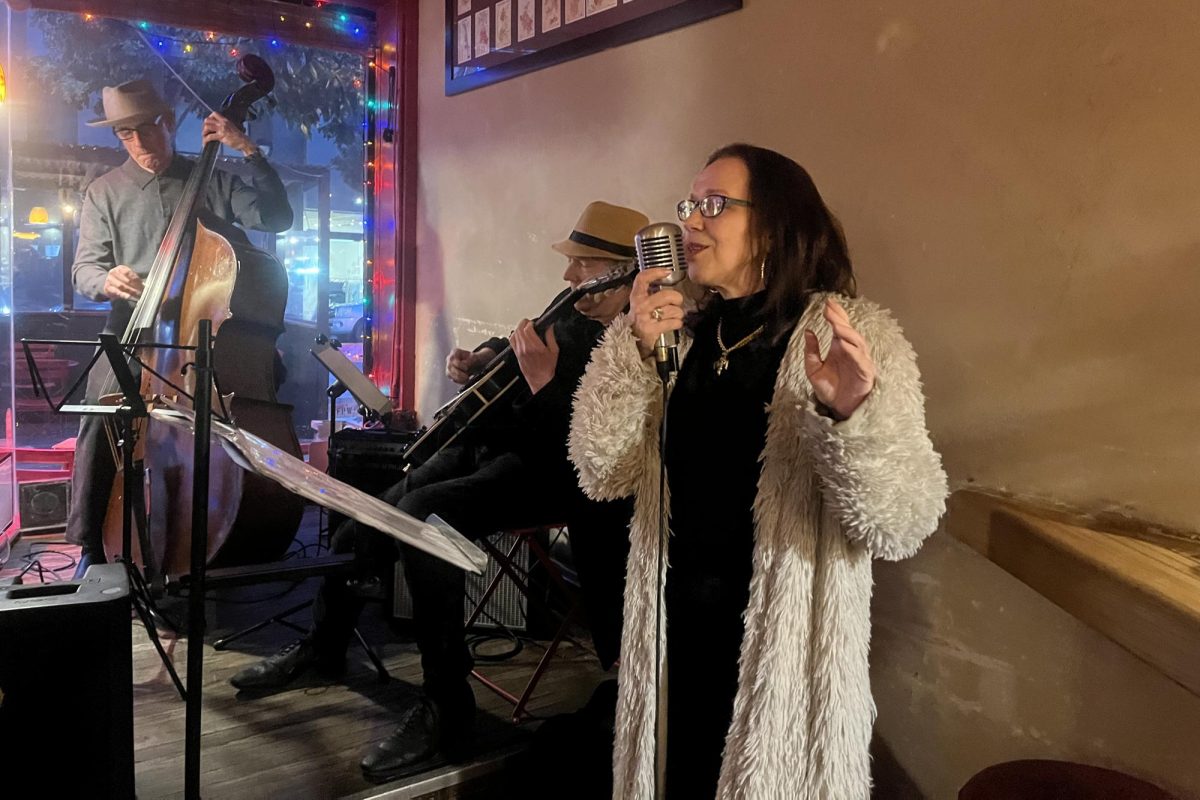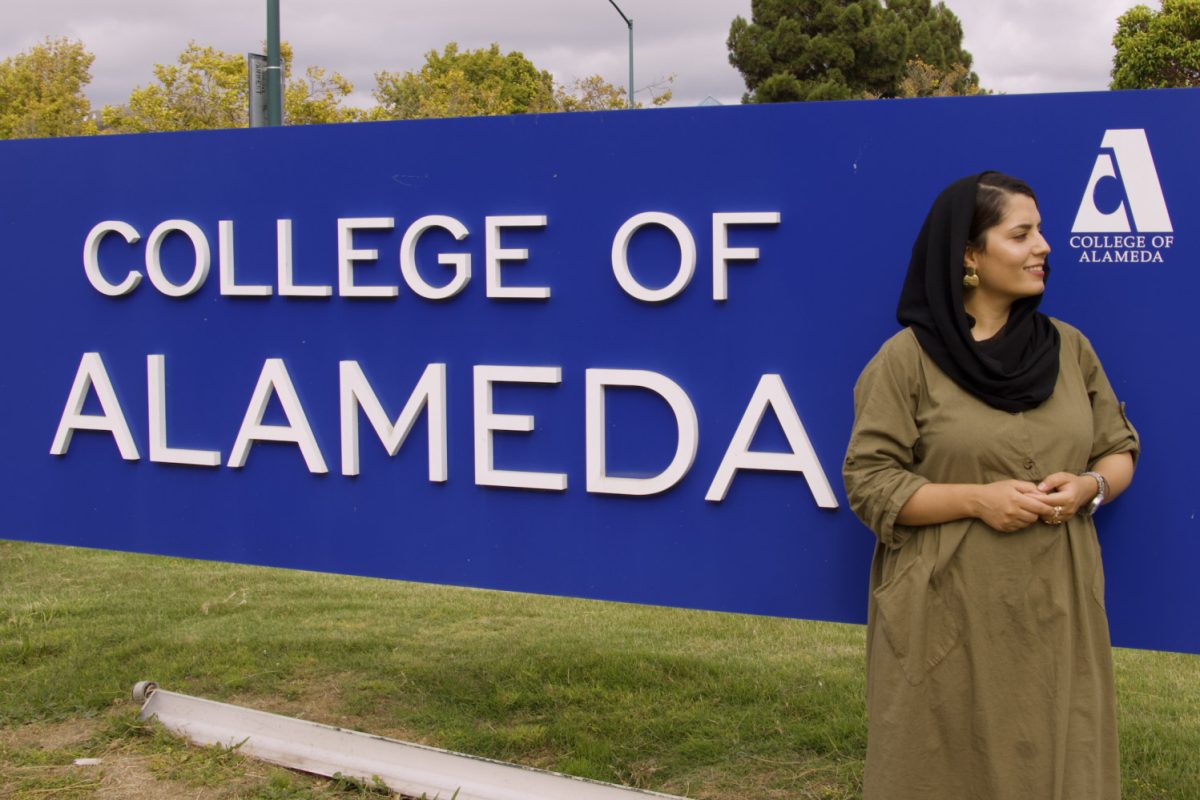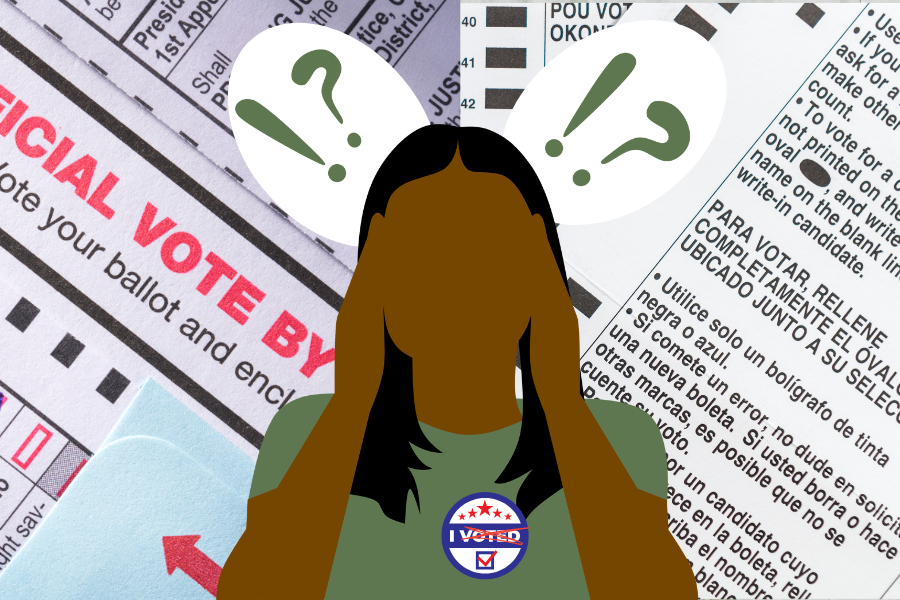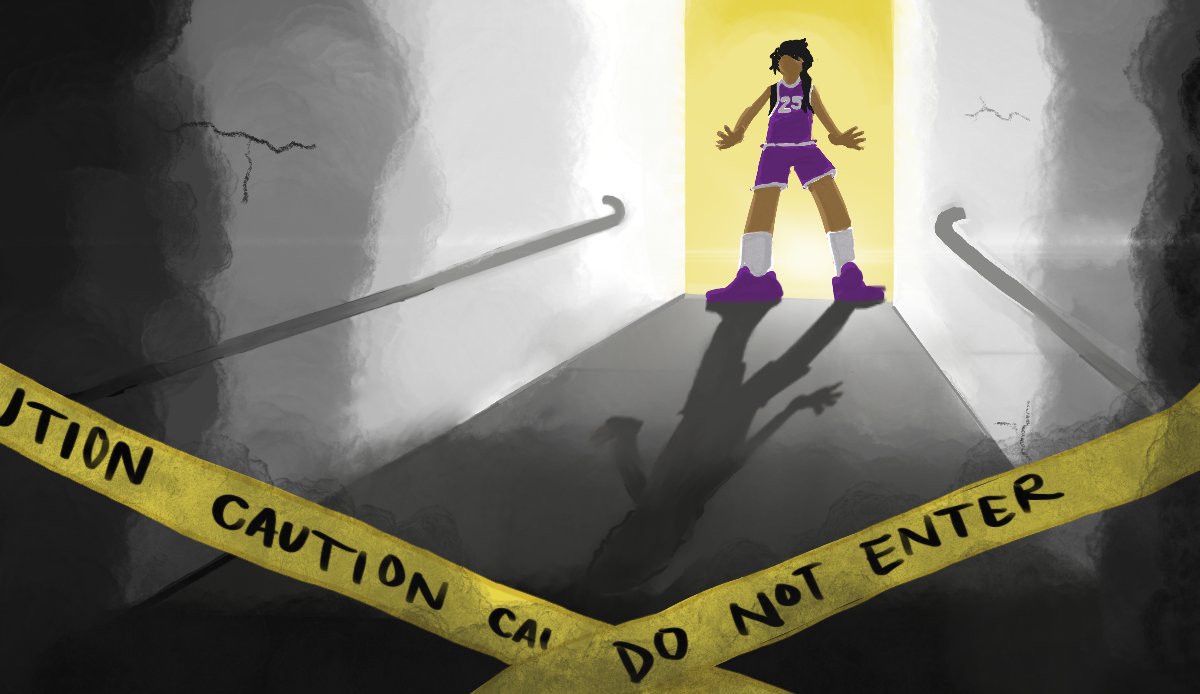 Frank Ozawa Plaza was turned into an arts playground, as OurCity and the City of Oakland partnered on Feb. 4–6 to produce the first “OurCity: Oakland Public Design Fair.” Oakland artists and residents came together to re-imagine Oakland by focusing on the theme of play.
Frank Ozawa Plaza was turned into an arts playground, as OurCity and the City of Oakland partnered on Feb. 4–6 to produce the first “OurCity: Oakland Public Design Fair.” Oakland artists and residents came together to re-imagine Oakland by focusing on the theme of play. At the fair’s “Pedal Powered Pump Organ,” made by artists from The Crucible, five-year-olds were pedaling next to 65-year-olds, making music from people-powered sounds.
At “Scaffoldia,” made by The Open Workshop, participants were invited to pick up blocks and help construct scaffolding to play on, between, within and underneath.
Another installation featured a makeshift living room wall that led all the way up to City Hall, and was covered with digital picture frames displaying selfies and family portraits, which passers-by could gaze at as though it were their own living room.
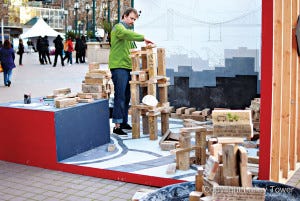 Nearby, a beautiful ground mural of brightly colored furniture models lined the pavement, so that people could just relax and enjoy the plaza while speakers and performances took place nearby.
Nearby, a beautiful ground mural of brightly colored furniture models lined the pavement, so that people could just relax and enjoy the plaza while speakers and performances took place nearby.  Occupy Oakland, still alive and well, was represented by Ashoka Finley, who took part in the Saturday storytelling event called “Oakland Story Hour: Tales from the Plaza.”
Occupy Oakland, still alive and well, was represented by Ashoka Finley, who took part in the Saturday storytelling event called “Oakland Story Hour: Tales from the Plaza.” Finally, during each night of the three-day fair, the Plaza was lit up by one of the most popular installations, a glowing basketball court with LED-lit basketballs and hoops.
Much has been said about Oakland’s need for access to healthy food for its growing population, but the OurCity event has changed the conversation to the second important factor in the road to health — physical activity.
 Research by the national nonprofit KaBOOM! found that only 25 percent of US teenagers get the recommended one hour of physical activity or active play each day, and younger children don’t get much more than that because of a lack of access to public play areas. Oakland has more open space than most cities, yet there is very little parkland for individuals and families to enjoy.
Research by the national nonprofit KaBOOM! found that only 25 percent of US teenagers get the recommended one hour of physical activity or active play each day, and younger children don’t get much more than that because of a lack of access to public play areas. Oakland has more open space than most cities, yet there is very little parkland for individuals and families to enjoy. OurCity is an Oakland non-profit that works with cities around the country to improve them through installations, workshops and festivals. It has been active for three years, bringing people together through what they call “public design as the process and product of creating with the public by the public for public good in public space.”
Thus, these test projects were not public property, nor private property, but temporary public installations. They had been out in the plaza for three days after construction.
In a big city, you never know what’s going to happen overnight, but when Ray Boyle, co-founder of OurCity, was asked if there was any need for extra security, she replied, “We didn’t ask the City of Oakland to help with any of that. We were all looking out for each other.”
“Oakland has a rich history of civic engagement, arts and culture, and innovation,” said Mayor Libby Schaaf, who spoke at the event. “This creative initiative merges those three areas while inspiring a community-driven planning process to determine how we use and maximize our public spaces.”
The goal of the OurCity creators was for the residents to work with residents on projects that would more fully utilize the social heart of the city, Frank Ogawa Center. On that first weekend of February, residents were indeed part of the creative process, as were people who crossed the bay from San Francisco to participate in the event.
Enthusiastic participants played long into the night, leaving Frank Ogawa Plaza brimming with life, and inviting Oakland residents to make use of the plaza and have fun doing it.








